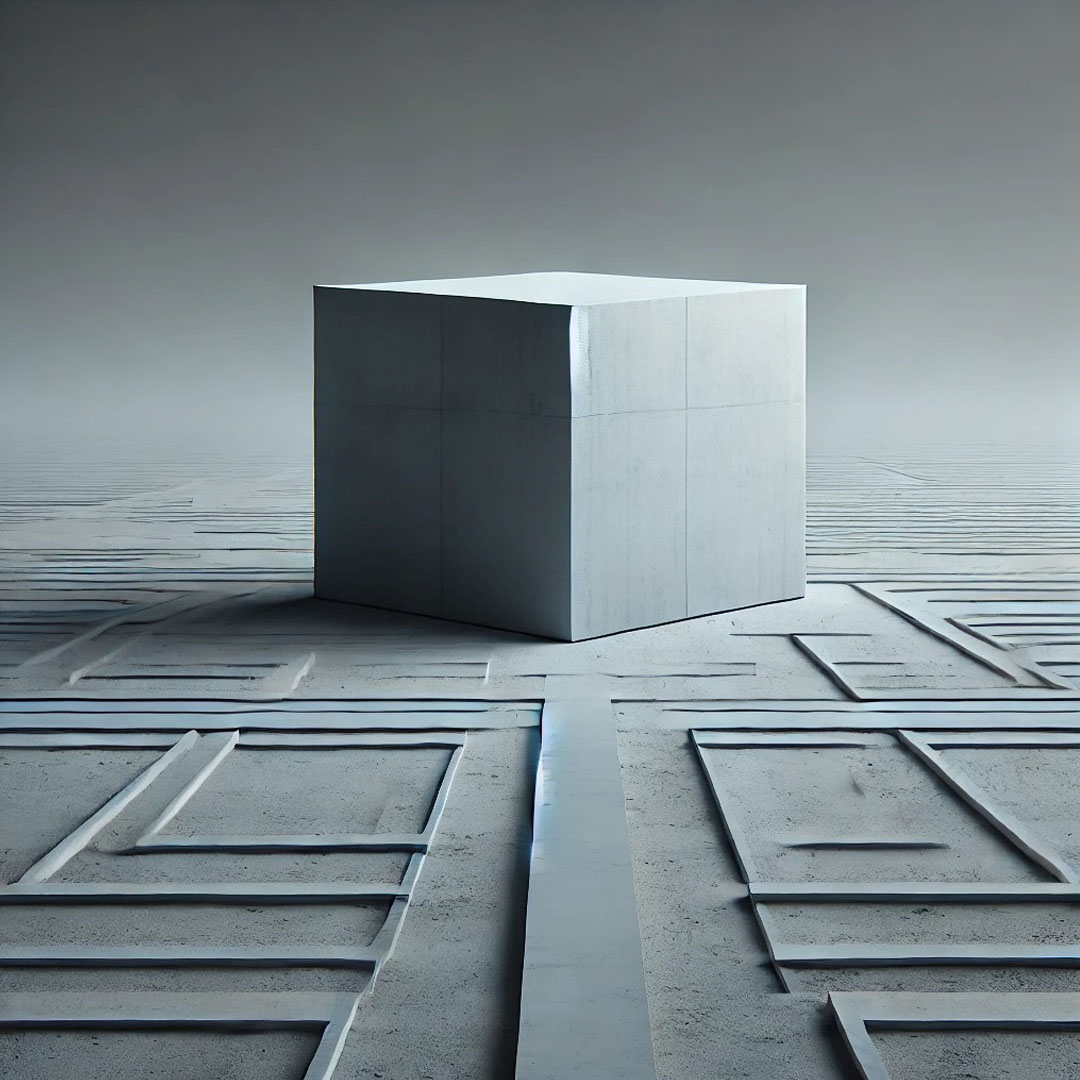In contemporary architecture, it is common to see designs that rigidly adhere to established standards, offering generic solutions that often lack spark. Many architects have adopted a functionalist and minimalist approach that, although efficient, often results in buildings devoid of soul and a genuine connection with their surroundings. One of the most evident examples of this issue can be seen in the design of single-family homes on plots with specific regulations.
The Problem of Conventional Design
Imagine a client who acquires a plot where urban planning regulations require a 3-meter separation from the boundaries. Automatically, the house becomes an isolated structure, surrounded by a perimeter space that often lacks purpose. This configuration creates a void around the property that is rarely utilized effectively, turning it into a mere circulation passage with no character or intent.
If the owner decides to place a patio at the back, they might have some luck, as the sides function as access corridors. But if the pool is placed in the front, the perimeter circulation becomes even more dysfunctional. This passage surrounding the house doesn’t invite a garden, a patio, or even a gathering space; rather, it is seen as a mere regulatory requirement that doesn’t add value to the design.
The Autistic House: Architecture Without Connection
This kind of configuration leads to what we might call an “autistic house,” a dwelling that does not engage with its environment nor encourage interaction between the interior and exterior. The house becomes a self-contained bubble, reflecting a much deeper problem in our society: the disconnection between the individual and their surroundings.
In a world where there is increasingly less genuine interaction, where human relationships are fragmented by technology and the fast pace of life, architecture should act as a bridge, not a barrier. However, perpetuating this model of housing without critical reflection only reinforces the lack of connection in all areas of life—personal, professional, and familial.
A New Way of Thinking About Space
If we want to break free from this inertia, architects must rethink the way we design. It is not just about complying with regulations or following stylistic trends, but about creating spaces that foster well-being, interaction, and integration with the environment. Some strategies to avoid architectural disconnection include:
- Design of intermediate spaces: Incorporating patios, galleries, terraces, and gardens that act as transition zones between the interior and the exterior.
- Utilizing perimeter space: Instead of leaving it as a simple passage zone, transform it into an active area with vegetation, furniture, or specific uses.
- Contextual design: Adapting the home to its natural and cultural surroundings, rather than imposing a generic template.
- Visual and functional integration: Creating strategic openings, using appropriate materials, and orienting spaces to enhance interaction between the home and its landscape.
Architecture as a Mirror of the Soul: Empathy in Design
The relationship between the interior and exterior in architectural design is not just a technical issue; it is a deep expression of the designer’s vision and the client’s aspirations. A truly committed architect doesn’t impose solutions but, through empathy, understands the inner world of those who will inhabit the space. This ability to interpret emotions, needs, and dreams allows the creation of environments that transcend functionality, becoming reflections of the identity and well-being of their occupants. In this sense, architecture is a bridge between the human being and their surroundings, a tangible manifestation of their way of inhabiting the world.
Beyond the Minimalist Cube
The problem is not minimalism itself but its purposeless application. Architecture based solely on formal and functional standards without considering its relationship with the environment is a missed opportunity. If we continue designing houses that isolate rather than connect, we are contributing to a more fragmented and less humane society. It is time to reconsider the role of architecture and restore its ability to create meaningful experiences, both spatial and emotional.
Architecture with Purpose
At ARQ-IAM, we believe in architecture that goes beyond trends and established norms. Our approach is based on designing spaces that encourage connection between the interior and the exterior, promoting livable, functional, and emotionally significant environments. We are committed to creating innovative projects that not only respond to technical needs but also improve the quality of life of those who inhabit them. Through conscious design, we aim to transform the way people experience their spaces, creating architectural solutions that integrate nature, well-being, and aesthetics in perfect harmony.


